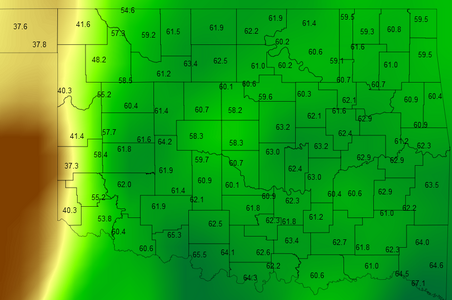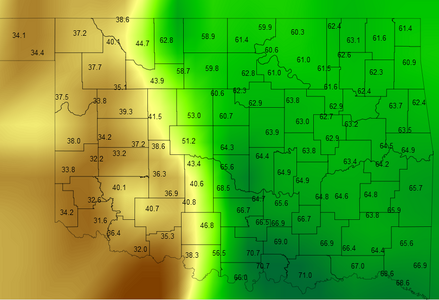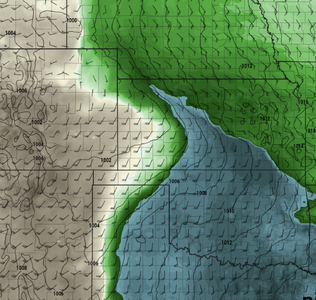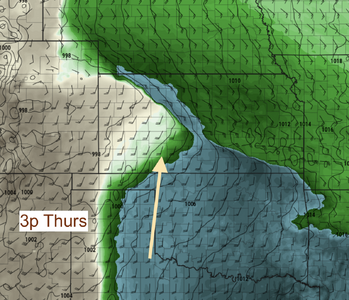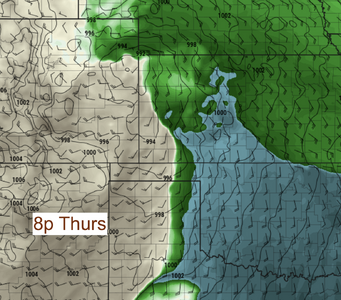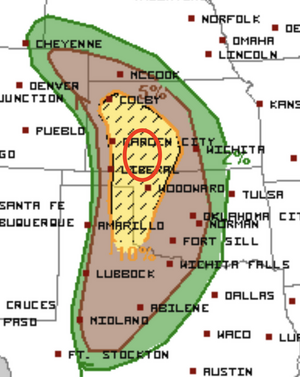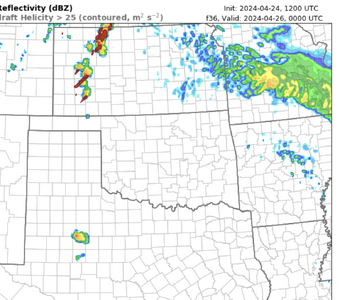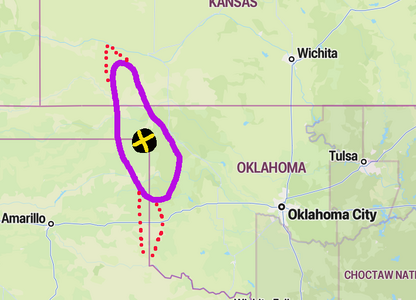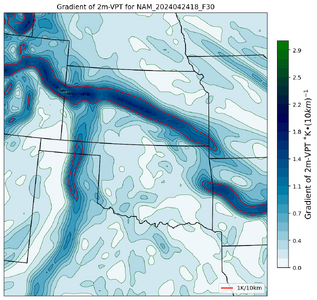Haven't been paying terribly close attention to this day, except when I checked the overnight CAM runs from NSSL and noticed some UH tracks in NW KS and NE CO, which is a play I could potentially make. Some other experimental ensemble forecasts highlight the potential of robust rotating storms as well.
The first ensemble,
NCAR's C-SHiELD, doesn't seem too excited about moisture:
ensemble mean
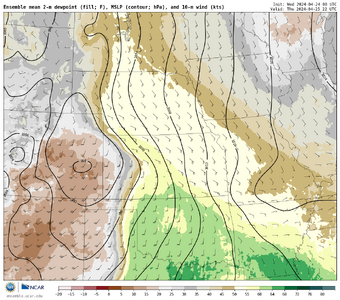 ensemble max
ensemble max
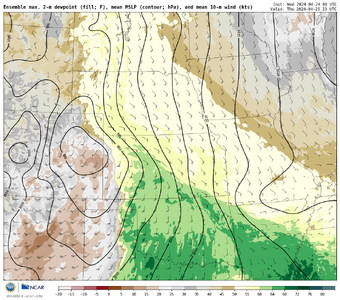
This leads me to believe that higher LCLs may be a factor in reducing the quality/intensity of storms that do form:
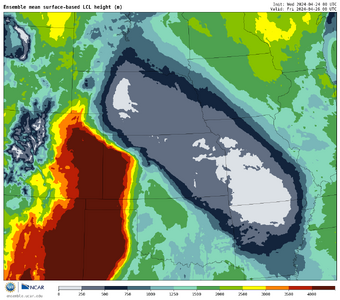
However, most members to fire storms, and some of those members maintain a cellular/discrete mode after 00Z. It's far from a majority, though (members 1, 5, 6, and 9 look sexy):
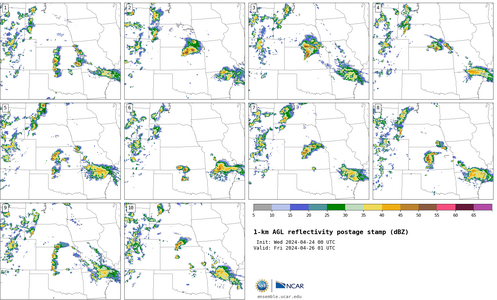
And the ensemble max UH fields reflect this, both with mid-level and low-level rotation:
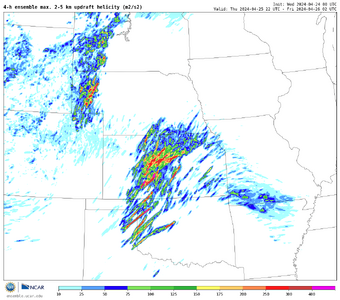
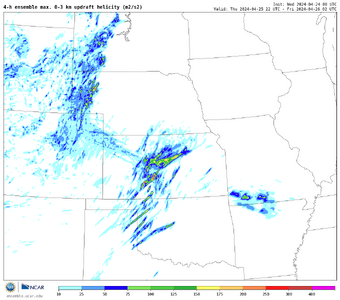
So I definitely see reasons to be optimistic.
The
MPAS ensemble, on the other hand, looks to be more friendly with the surface moisture:
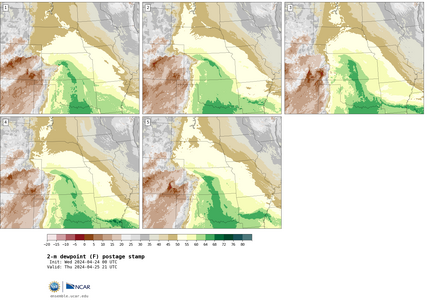
But it seems to favor a more linear storm mode despite having more shear over the DL from N TX through S KS. But boy if that second member verifies...
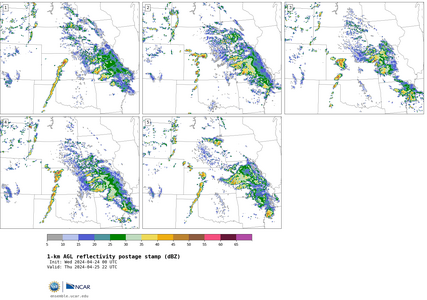
Rotation tracks look a little less prominent, but there are definitely some bigger values, especially in NC KS.
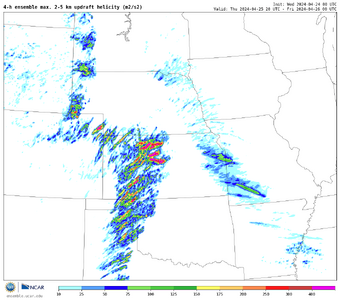
I even see some hints of rotating storms in NE CO, too! However, likely due to a final surge of moisture around and after 00Z, the largest increase in UH track presence across both NE CO and W NE happens
after 00Z, which puts daylight storms in that area in question.

